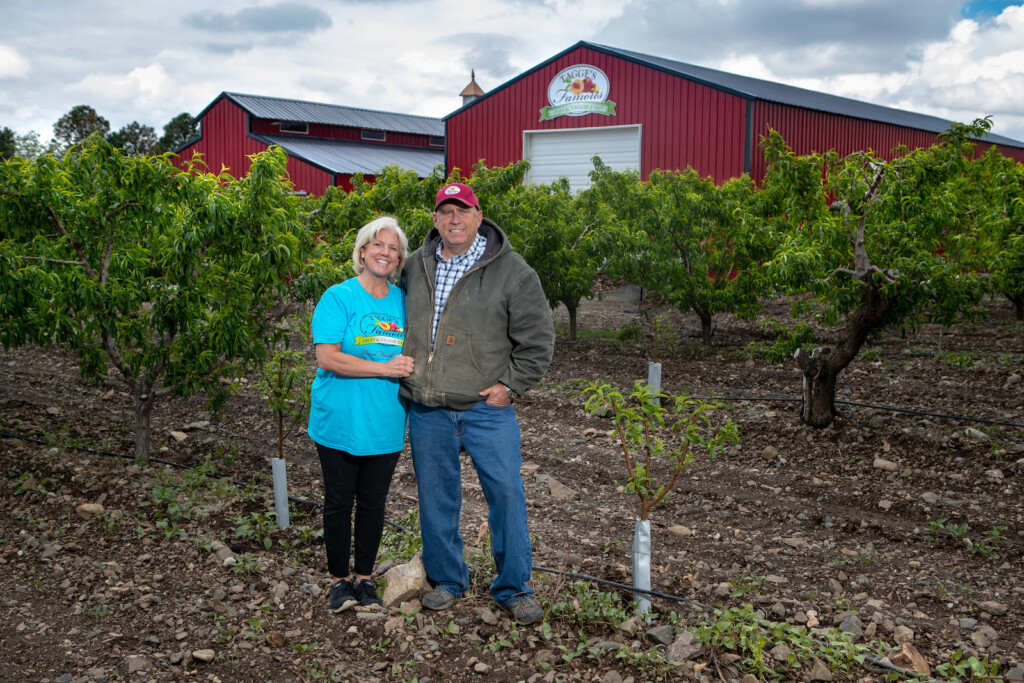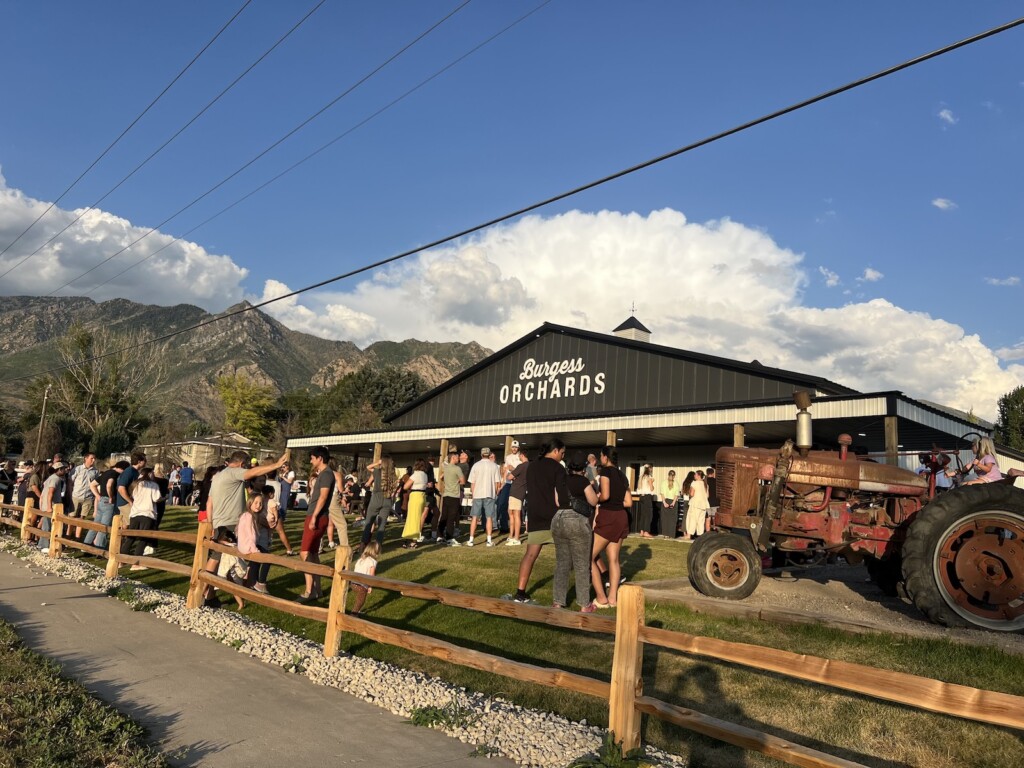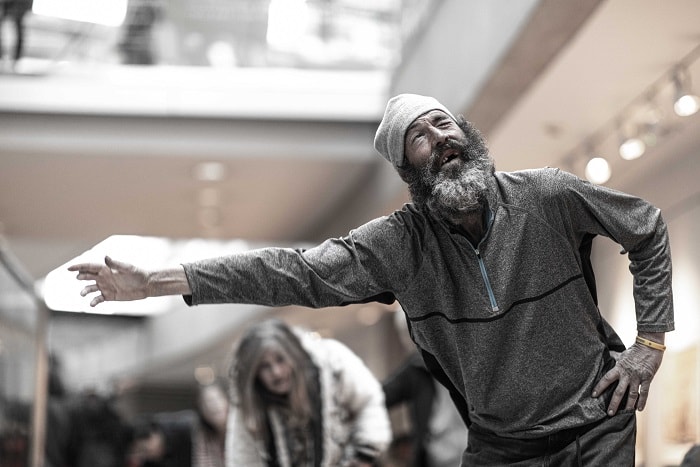
First comes the coffee. Next comes the quiet. Then comes the tai chi. It is a combination that could change the world.
Three times a week, a group of about 40 houseless people gather in the plaza of the Salt Lake City library. Houseless perhaps, but not homeless, because this tai chi community has been their home for the past three years. Men and women socialize and then set aside their backpacks to concentrate on the graceful moves that define this discipline.
“You have people who never showed up to work that call and say they can’t make it, like they’re missing a job,” says Chris, who with his dog Eleanor, has been practicing since the beginning.
“It is my preferred martial art form,” says Ben. “By focusing, you feel every muscle as it moves. The turning motions allow you to absorb all your surroundings and open yourself to the elements.”
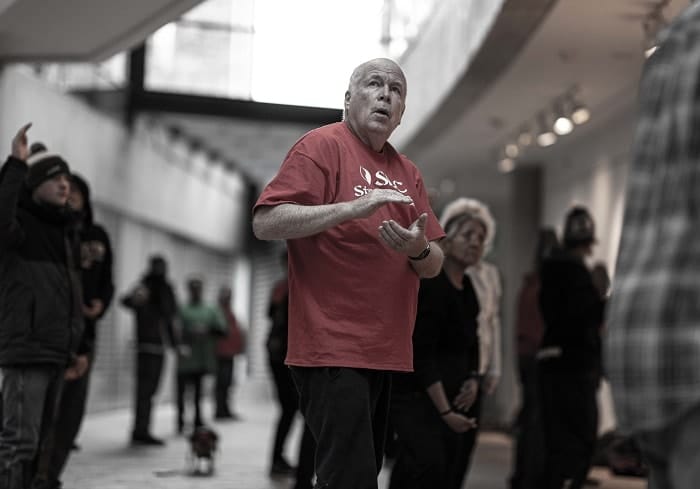
“I want to be here,” says Mitch, a veteran with a gimp leg. “You realize that everyone has their challenges. It’s a therapy that allows me to center myself since these moves have been around for 4,000 years.”
Indeed, this ancient form may be a solution to modern societal problems. Seeking these solutions is what motivated Marita and Bernie Hart to create the program. The two were ski instructors over a decade ago when they observed the ties between motion, emotion, balance and learning. Bernie realized that how a child interacts with gravity, via crawling or rolling, is one of the crucial early lessons that one absorbs.
“A child’s early perceived tasks of movement affects their thoughts and emotions. It creates patterns,” he says. After taking tai chi classes at a senior center, they felt this venerable form could be utilized to help people evolve their adult thought mechanisms.
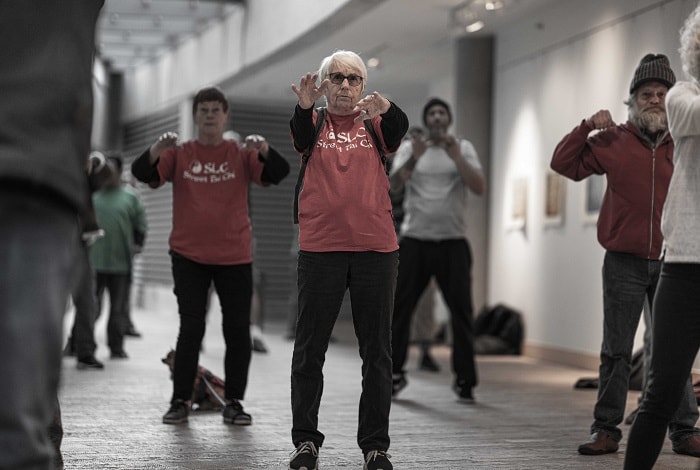
“Tai chi is a vehicle,” says Bernie. “It’s really about using motion to develop a different way for people to interact with the world and create a new story for themselves.”
Street tai chi passes no judgement on form correctness. A person’s feeling of accomplishment helps open them to interacting with the group, which provides an accepting sense of family. “We never tell people what to do or ask them why they are here,” says Marita.
Shelter is one aspect of homelessness. But just as important is dealing with how PTSD affects people on the streets. Government agencies are at a loss for coping with this question, and Bernie wants to prove that the motion and emotional link can lead to a solution. “I woke up one morning and said to Marita, ‘Bet me that I can change the world.’”
Street tai chi may be a horse that is a longshot, but it certainly is gaining ground.
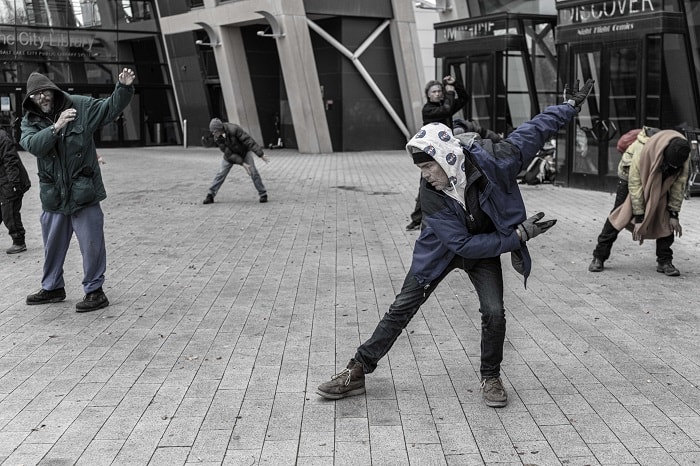
RELATED STORIES:
Homeless Millennials—Weighing In On Big Changes to City Programs
Homeless in Sugar House: The Problem Does Not Go Away, Only Moves Around
How Drug Addiction and Homelessness are Intertwined
Tackling Homelessness in the Suburbs
Operation Rio Grande And the impact on Utah’s Homeless
Did A Daily Show Story Flood Salt Lake City with Homeless?
Portraits and Profiles: Homeless Street Sweeper
Sugar House Residents and Council Members on The Proposed Homeless Shelter
Inside Heroin Addiction and Homelessness in Salt Lake City


